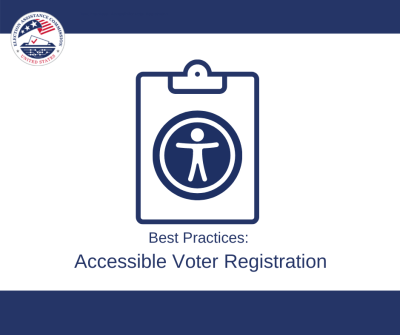Best Practices: Accessible Voter Registration (Full PDF Version)
It is estimated that voters with disabilities represent roughly one-sixth of the American electorate. This growing demographic encompasses a broad range of voters, including those with mobility, visual, communicative, physical, or cognitive impairments. Voters with disabilities face unique obstacles in voting.
The right of people with disabilities to vote privately and independently with equal access to voter registration and the electoral process is secured through the Help America Vote Act of 2002 (HAVA), Title II of the Americans with Disabilities Act (ADA), the National Voter Registration Act (NVRA), and the Voting Accessibility for the Elderly and Handicapped Act. These laws have created a series of rights that work to ensure voters with disabilities can access all portions of the electoral process in a manner that is accessible to them. HAVA grants the right for voters with disabilities to be able to mark, cast, and verify their ballot privately and independently.
Title II of the ADA requires state and local governments to ensure people with disabilities have equal access to government services and information, including the voting process. The NVRA mandates that participating states provide voter registration options at offices that offer services to individuals, including those with disabilities. The Voting Accessibility for the Elderly and Handicapped Act requires polling places be accessible.
This guide will highlight the primary barriers to accessibility in the voter registration process and provide best practices to help ensure voters with disabilities have equal access to this crucial first step of the voting experience. The checklists and best practices in these guides can be utilized by election officials, policymakers, and advocates.


